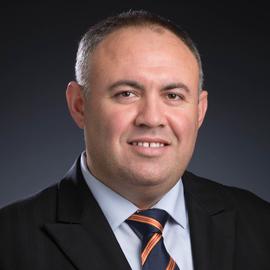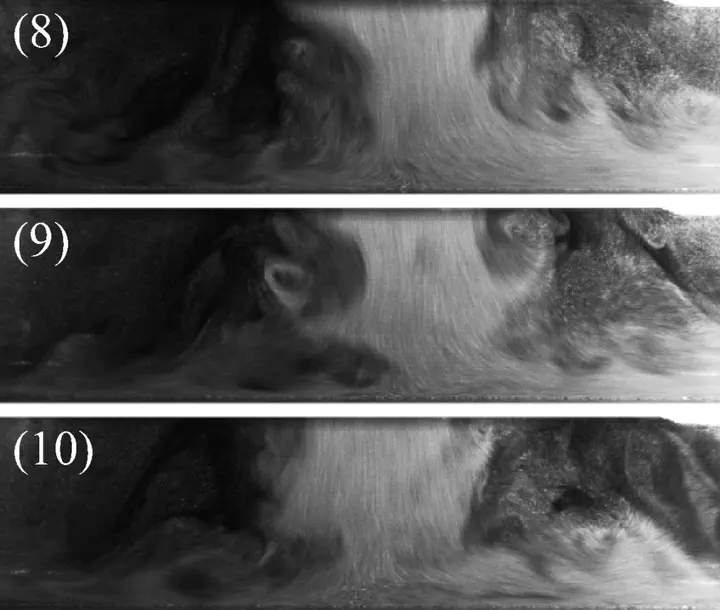Flow structure and heat transfer of a sweeping jet impinging on a flat wall
Tongil Park, Kursat Kara, Daegyoum Kim
April, 2018
Abstract
While an impinging jet has been widely investigated because of its remarkable convective heat transfer performance, the impingement of a sweeping jet that undergoes periodic oscillation has drawn little interest. We experimentally examined the heat transfer of a sweeping jet impinging on a flat wall for several Reynolds number and nozzle-to-plate spacings and discovered an unsteady flow structure to characterize heat transfer capability. The local Nusselt number on the wall was evaluated by measuring temperature with thermocouples, and a flow was visualized quantitatively using particle image velocimetry. The distribution of the Nusselt number is different from that of a round jet, exhibiting two distinct regions. Near the center of a sweeping jet, a high Nusselt number zone is formed without a noticeable peak commonly observed in a round jet. Away from the central region, the Nusselt number decreases monotonically. The trends of the Nusselt number in the two regions are correlated with the first mode of the flow structure obtained by proper orthogonal decomposition (POD). The boundary of the two regions is a local minimum of the first POD mode near the wall, and the magnitude of the first POD mode is large in the central region of a high Nusselt number. We observed that the distributions of mean lateral velocity and lateral velocity fluctuation differed between the two areas, implying that both quantities should be considered for the analysis of heat transfer performance.
Publication
International Journal of Heat and Mass Transfer

Kursat Kara
Associate Professor, Mechanical and Aerospace Engineering
Kursat Kara is an Associate Professor of Mechanical and Aerospace Engineering at Oklahoma State University and principal investigator of the Kara Aerodynamics Research Laboratory. His research spans hypersonic boundary-layer physics, unsteady aerodynamics, and the emerging interface of quantum computing and fluid dynamics. A dedicated educator and mentor, he teaches core and advanced courses—including Fundamentals of Aerodynamics, Computational Fluid Dynamics, Boundary-Layer Theory and Transition, and Quantum Computing—and supervises graduate and undergraduate projects in high-fidelity simulation and data-driven modeling. His work has been funded by NASA, NSF, Oklahoma NASA-EPSCoR, NAVAIR, ANSYS, and IBM Quantum. In 2025, he received the CEAT Excellent Faculty Award and was nominated for both the 2024 Excellent Teacher Award and the 2025 Excellent Faculty Award by OSU’s School of Mechanical and Aerospace Engineering. Dr. Kara earned his Ph.D. from Old Dominion University with a dissertation on hypersonic boundary layer receptivity to acoustic disturbances. He began his career as a research engineer at New England Analytics (supporting Sikorsky Aircraft), then completed a post-doctoral appointment at Penn State in hot jet simulations for aeroacoustics. In 2010, he helped establish the Aerospace Engineering Department at Khalifa University—where he won the President’s Faculty Excellence Award for Outstanding Teaching in 2015—before joining OSU. An active member of AIAA and APS, he served on the AIAA Applied Aerodynamics Technical Committee (2012–2021) and chaired/co-chaired multiple AIAA conferences. He also sits on the editorial board of Nature Scientific Reports and guest-edits its Quantum Computing collection.
